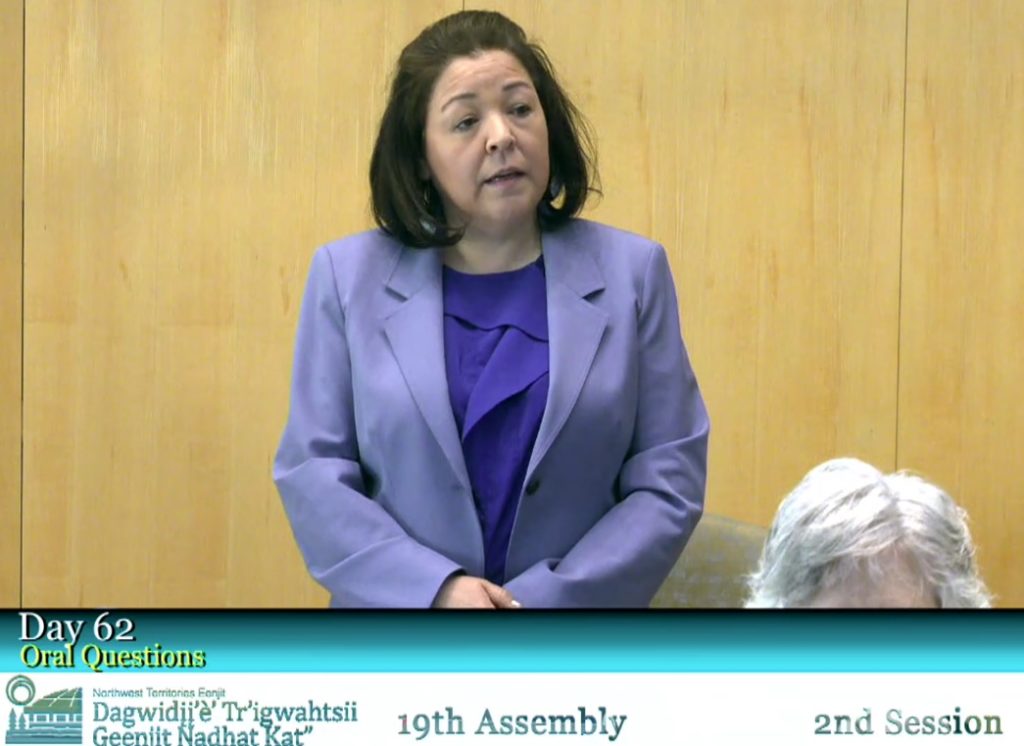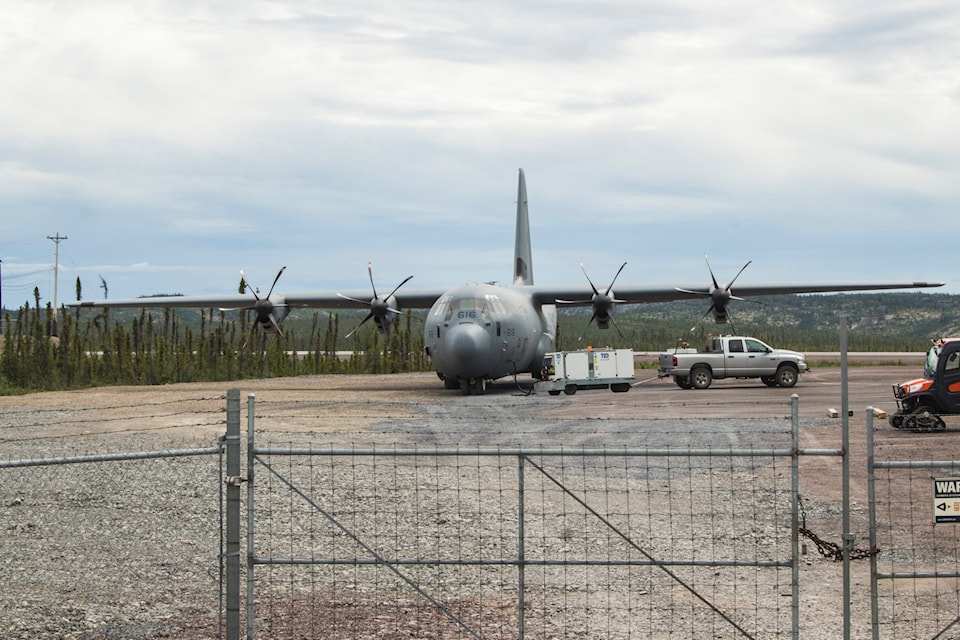A decision by NAV Canada whether to recommend culling the graveyard shift at Mike Zubko and Norman Wells Airports that was expected by the end of January has yet to be presented to the public, and Infrastructure Minister Diane Archie said the GNWT continues to push for the idea to be dropped.
Archie responded to a question brought up during the 'bearpit' sessions on the third day of the Northwest Territories Association of Communities annual general meeting Feb. 27 asking for a status update on NAV Canada's position, but she told delegates there wasn't one.
"The aeronautical study process was established to provide a mechanism for NAV Canada to adjust services at its sites," said Archie. "Whether an increase or decrease in service level based on safety requirements, trends, customer needs and changing technology.

GNWT image
"This is a process that provides customers, industry and stakeholders with an opportunity to provide input consideration of risks and mitigation prior to NAV Canada making a recommendation to change its service at any site."
Archie added that Transport Canada has to give final approval to any changes NAV Canada suggests to service levels. She noted remote and northern communities have extra time to voice their concerns.
While NAV Canada's consultation was completed on Dec. 7, a final recommendation was not expected until the end of January. Archie said the department of Infrastructure had since forwarded more concerns on from local stakeholders.
"This is not something that Inuvik or Norman Wells asked for," said Archie. "This is something that NAV Canada imposed on us and we're trying to justify, working with our partners, to be able to not lose the service."
Governments around the Beaufort Delta were left in freefall last November when NAV Canada informed them the two airports were up for review. The non-profit organization that oversees all of Canada's civil air traffic was trying to determine if it needed to pay for graveyard shifts at the two airports.
It was met with fierce opposition from the Town of Inuvik but also the Gwich'in Tribal Council, which told Inuvik Drum at the time not having a person on duty from midnight to 8 a.m. could present a serious problem in the event of a medical emergency, since all medical evacuations go through the Inuvik Regional Hospital and Mark Zubko Airport before moving to Yellowknife and then Edmonton.
Inuvik Mayor Natasha Kulikowski wrote a letter to NAV Canada Nov. 27 asking for the status quo to remain, pointing out the airport is also a forward operating base for NORAD and frequently engages in military exercises from it.
NWT MP Michael McLeod has also voiced his support for keeping the schedule as is.
NAV Canada's review also comes at a time when the federal and territorial governments are actively expanding Mike Zubko airport, extending the runway by 3,000 feet to accommodate larger military aircraft, as well as building a brand new air terminal to replace the current one and reworking the drainage and infrastructure of the entire airport.
NAV Canada previously told Inuvik Drum a terms of reference for Inuvik states currently the organization operates a Flight Service station which provides 24-hour Aerodrome Advisory Services (AAS), Vehicle Control Services and a Surface Weather Observation program. These are handled by human observers on the ground and enable a 24-hour weather forecast service.
According to the terms, air traffic at the airport has dropped 13 per cent from 2016 to 2019, or roughly 11,300 less flights per year, which puts the airport below the guidelines for a 24-hour AAS.
NAV Canada spokesman Brian Boudreau said the assessment was still underway and a final decision is expected in the spring.
